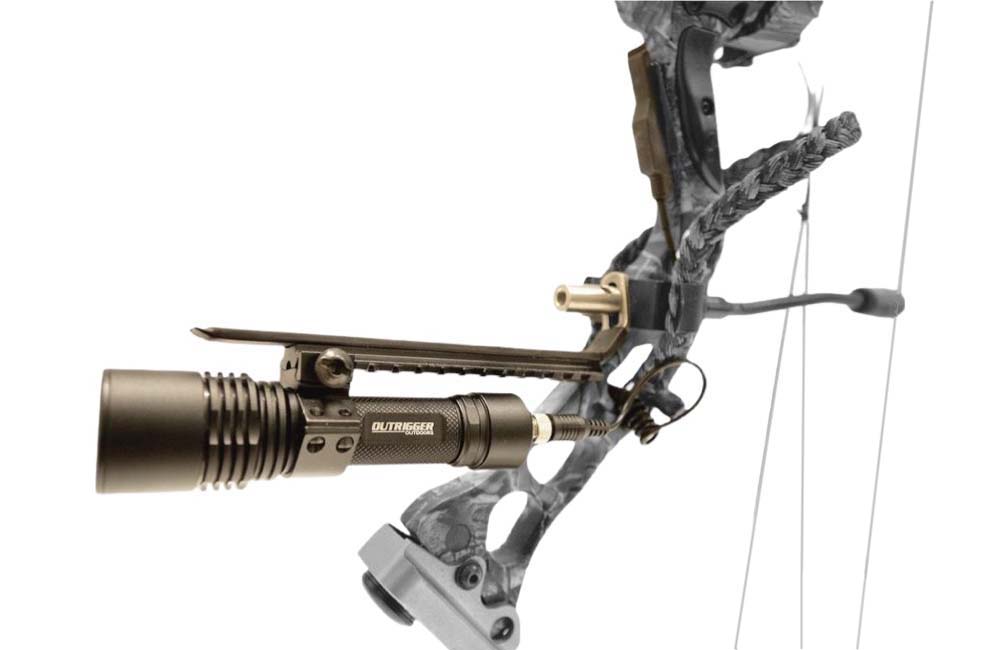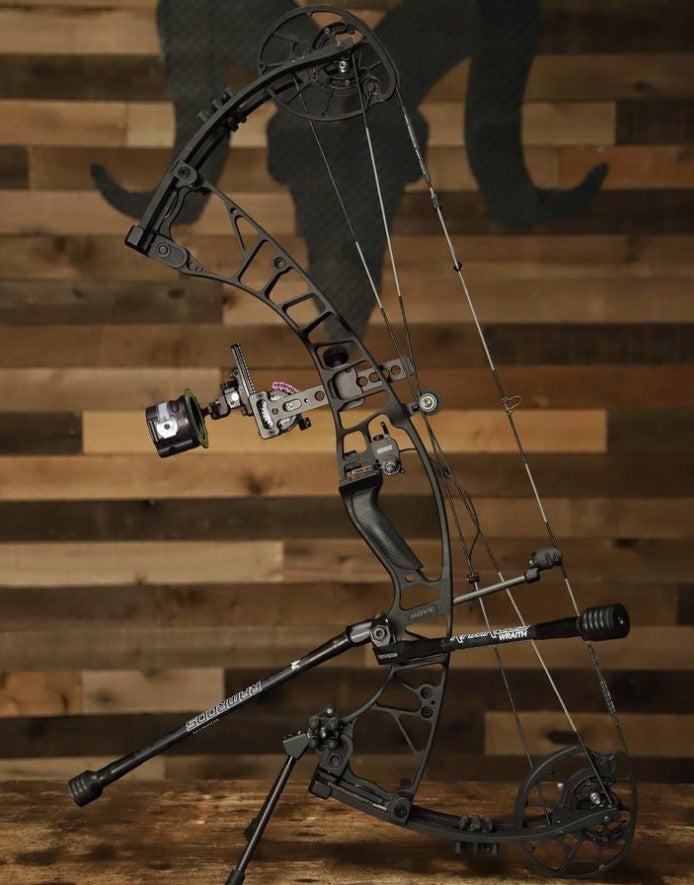Grasping Archery Stabilizers: A Complete Guide for Beginners
Grasping Archery Stabilizers: A Complete Guide for Beginners
Blog Article
The Ultimate Overview to Selecting the Right Archery Stabilizer for Boosted Accuracy
Archery is a sport that requires accuracy and accuracy, and choosing the appropriate equipment is crucial for achieving optimal outcomes. Among the different accessories readily available, an archery stabilizer plays a substantial function in enhancing precision. With so several choices on the market, it can be overwhelming to determine which stabilizer is the best fit for your demands. In this comprehensive overview, we will check out the essential aspects to think about when selecting an archery stabilizer for improved accuracy. From locating the ideal length to understanding the different designs and products, we will explore every little thing you require to know to make an educated decision. Whether you are an experienced archer looking to upgrade your equipment or a novice looking for assistance, join us on this journey as we decipher the keys to picking the best archery stabilizer.
Size: Locating the Optimum Stabilizer Length
When selecting an archery stabilizer for optimum performance,Establishing the suitable stabilizer size is critical. The length of a stabilizer straight impacts the equilibrium, stability, and precision of the bow. A stabilizer that is as well long can make the bow really feel difficult and top-heavy to control, while a stabilizer that is also brief might not give sufficient stability and dampening of resonances. Discovering the right length requires taking into consideration variables such as the archer's shooting design, bow weight, and personal choice.
A longer stabilizer, usually ranging from 8 to 12 inches, can provide greater stability and lower bow torque. This is particularly useful for archers who shoot with a high draw weight or those who tend to torque the bow throughout the shot. The included length helps to disperse the weight evenly and counterbalance any kind of torque or motion.
On the other hand, a shorter stabilizer, typically between 4 to 7 inches, supplies more ability to move and quicker reaction. It is preferred by archers that fire with a reduced draw weight or those that require more wheelchair, such as seekers or 3D shooters. The shorter size enables for much easier motion with tight spaces and faster adjustments.
Inevitably, the optimal stabilizer size is a matter of individual choice and shooting style. It is suggested to trying out various lengths and observe the effects on stability and accuracy. Consulting with knowledgeable archers or specialists can also supply beneficial insights and recommendations.
Weight: Establishing the Appropriate Stabilizer Weight
After thinking about the optimum stabilizer size, the following important element to think about when choosing an archery stabilizer is identifying the proper stabilizer weight - archery stabilizer. The weight of the stabilizer plays an essential role in enhancing accuracy and stability throughout the shot
The weight of the stabilizer affects the balance and control of the bow. A larger stabilizer can provide increased stability and control, particularly for shooters with a tendency for inconsistent shots or unstable hands. It helps to absorb the resonances and recoil created by the bow, reducing torque and minimizing the effect on the arrowhead's trip.
On the various other hand, a lighter stabilizer enables for a quicker and a lot more receptive bow. It can be advantageous for shooters that focus on maneuverability and speed over security. Lighter stabilizers additionally lower tiredness during long shooting sessions or competitions.
To determine the proper stabilizer weight for your requirements, it is necessary to consider your shooting design, physical stamina, and bow setup. Exploring with different weights and observing the impact on your capturing performance find more info is key to locating the perfect equilibrium.
Inevitably, the ideal stabilizer weight will certainly vary for each individual archer. It is advised to begin with a moderate weight and make modifications based on individual choice and capturing outcomes. Bear in mind, the goal is to achieve a stable and controlled shot, while also keeping convenience and simplicity of use.
Materials: Picking the Right Materials for Resilience and Efficiency
When picking an archery stabilizer, it is essential to thoroughly take into consideration the materials utilized in its building to make certain toughness and optimize performance. The selection of materials can substantially impact the general top quality and effectiveness of the stabilizer.
Among the most generally used materials for stabilizers is carbon fiber. Carbon fiber uses a high strength-to-weight proportion, making it lightweight yet exceptionally strong. This material lowers and takes in resonances bow torque, resulting in improved stability and accuracy. Furthermore, carbon fiber stabilizers are immune to temperature level modifications and are much less most likely to warp or bend with time.
One more prominent product for stabilizers is light weight aluminum. Light weight aluminum stabilizers are recognized for their durability and rigidness. They offer outstanding moistening abilities, decreasing the quantity of shock and resonance transferred to the shooter's hand. Aluminum stabilizers also offer a variety of modification choices, enabling archers to adjust the weight and length to fit their choices.
Some stabilizers are built making use of a mix of materials. For example, a stabilizer might have a carbon fiber core wrapped in an aluminum covering. This hybrid design combines the best qualities of both products, giving optimum security, longevity, and efficiency.
Layout: Comprehending the Various Stabilizer Layouts and Their Effects
Taking into account the materials used in archery stabilizers, it is crucial to now look into the various layouts of stabilizers and their respective effects. The style of an archery stabilizer plays a critical duty in improving precision and reducing resonance throughout the shot. There are a number of different styles available on the market, each with its own unique characteristics.

One more preferred layout is the side bar stabilizer. This design entails attaching a brief rod sideways of the bow, alongside the main lengthy rod. Side bar stabilizers help in reversing the weight of devices, such as quivers or views, and provide additional security to the bow.
Some stabilizers come with flexible weights. These stabilizers enable archers to make improvements the balance and feel of their bows by adding or eliminating weights. This function is especially useful for archers that prefer a details weight circulation or want to explore different arrangements.
Additionally, some stabilizers integrate moistening modern technology to lessen vibration and sound. These stabilizers frequently have built-in dampeners or make use of products that take in vibrations, resulting in a smoother and quieter shot.

Accessories: Discovering Additional Devices for Enhanced Stability
These accessories are designed to work in conjunction with the archery stabilizer to supply an also better level of stability and accuracy. One such device is the V-bar or the side stabilizer place.
Another device that can enhance stability is a bow sling. A bow sling is a band that affixes to the bow and allows the archer to keep a loosened up grip on the bow take care of without the fear of dropping it (archery stabilizer). This unwinded grip aids to decrease muscular tissue tension and enables a much more constant and stable shot
In addition, a stabilizer weight system can be made use of to adjust the equilibrium and security of the bow. These weight systems typically include small weights that can be added or removed from the stabilizer to change the balance factor of the bow. By locating the optimum equilibrium point, archers can accomplish a much more steady and exact shot.
Final Thought
In conclusion, picking the ideal archery stabilizer entails considering variables such as length, weight, products, style, and additional accessories. The optimum stabilizer length and weight will depend on specific preferences and shooting style.
Identifying the suitable look at this now stabilizer size is critical when choosing an archery stabilizer for ideal performance. A stabilizer that is too long can make the bow really feel top-heavy and difficult to regulate, while a stabilizer that is as well short might not offer adequate security and dampening of vibrations - archery stabilizer.Taking into account the products used in archery stabilizers, it is important to currently dig right into the different designs of stabilizers and their corresponding impacts. Side bar stabilizers help in reversing the weight of accessories, such as quivers or views, and provide additional stability to the bow
These weight systems commonly are composed of little weights that can be included or eliminated from the stabilizer to adjust the balance factor of the bow.
Report this page